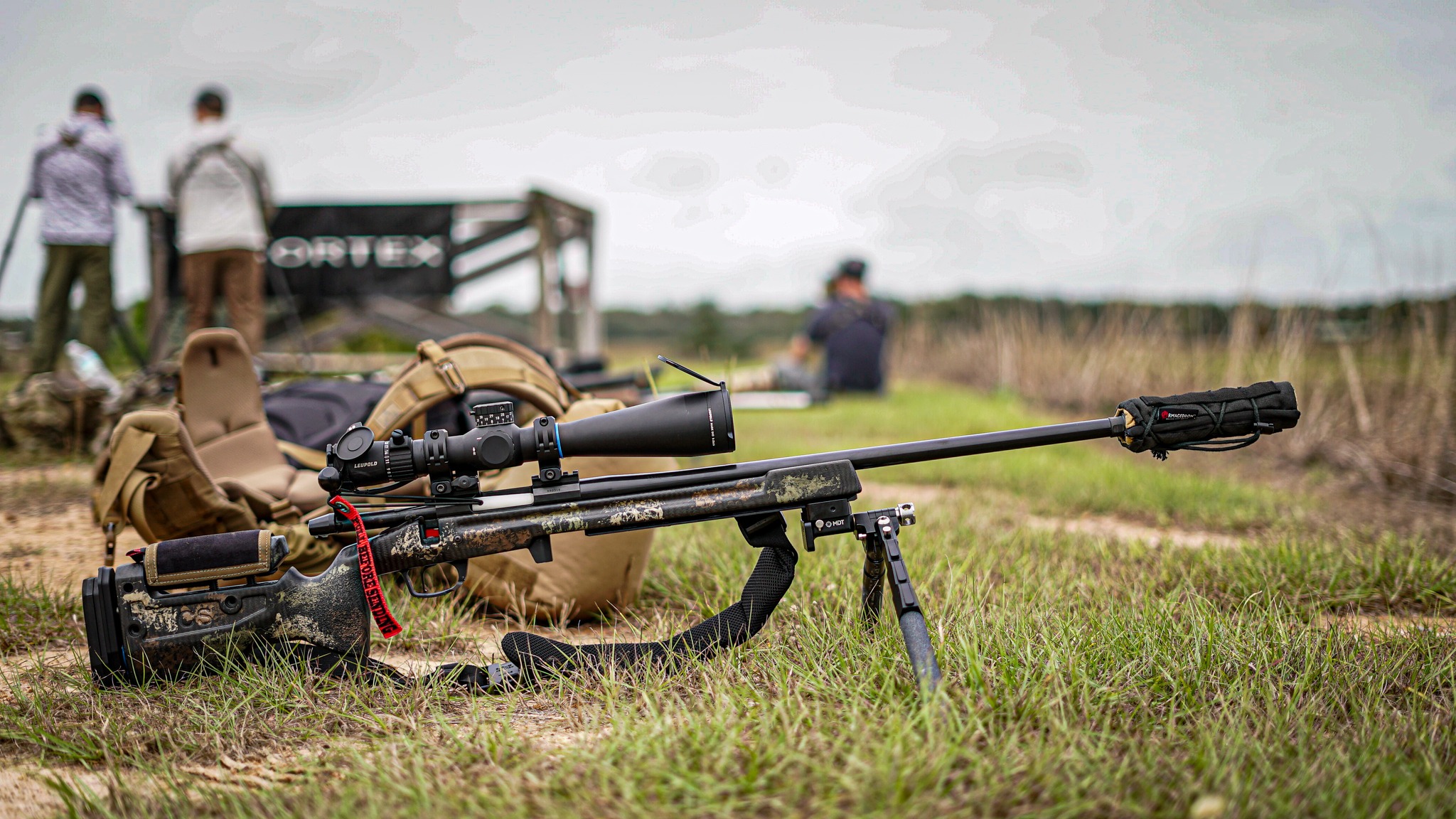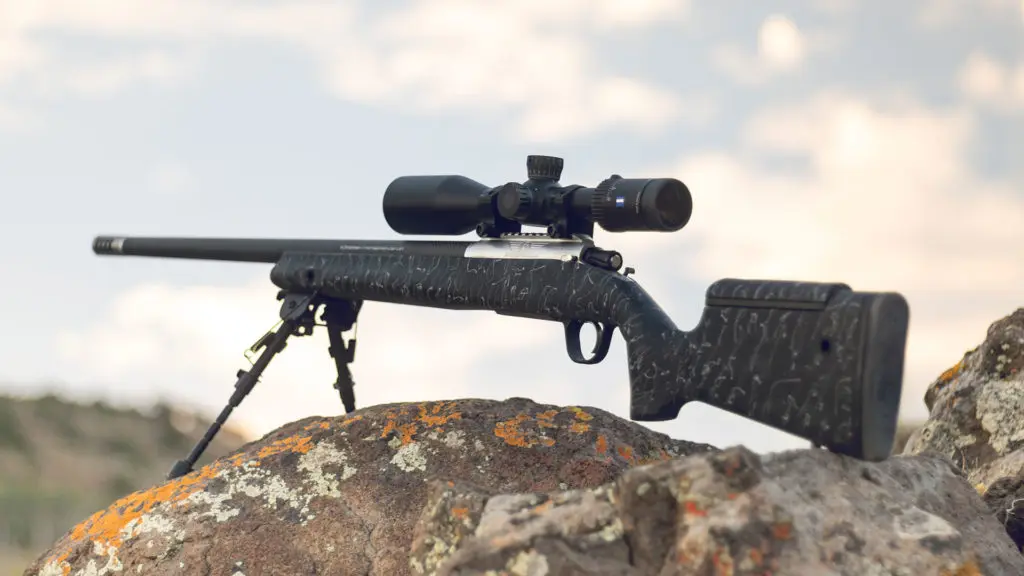Tips for Long Range Shooting Accuracy
Long range shooting requires a blend of skill, practice, and precision. Unlike short-distance shooting, which primarily focuses on aiming and trigger control, long range shooting accuracy demands careful attention to factors like wind, bullet trajectory, and the minutiae of gun setup. Whether you’re a beginner or an experienced shooter looking to improve, mastering these key aspects can make a significant difference in hitting your target accurately. Let’s go through essential tips to enhance your long range shooting accuracy.

1. Perfect Your Shooting Position
A stable shooting position is the foundation of accuracy. When you’re shooting from long distances, even slight movements can throw off your aim. The prone position, where you lie flat on your stomach, provides the most stability. Make sure your body alignment is direct and your rifle’s buttstock sits firmly in your shoulder. This reduces the movement caused by recoil and helps maintain the rifle’s aim during the shot. Experiment with other positions like kneeling or seated to understand how body posture impacts accuracy.
2. Invest in Quality Optics and Scopes
Long range shooting accuracy often depends on having the right scope. A scope with adequate magnification allows you to zoom in on distant targets, making it easier to aim precisely. Consider scopes with adjustable magnification settings to accommodate various ranges. Opt for a scope with reliable windage and elevation adjustments—features that are essential when accounting for environmental factors. Scopes with a higher power lens and clarity can be a good investment, especially for those aiming at targets over 500 yards.
3. Focus on Trigger Control
Proper trigger control is crucial for long range shooting accuracy. Avoid jerking or pulling the trigger, which can throw your aim off balance. Instead, apply gradual, steady pressure on the trigger until the shot fires. Practice a technique known as “press and reset,” where you press the trigger slowly and only release it partway before pressing again. This method helps build muscle memory for smooth trigger pulls, which is key for consistent accuracy over long distances.
4. Master Your Breathing Technique
Breathing impacts shooting accuracy, especially at long range. Uncontrolled breaths can cause subtle movements that shift your aim. The best practice is to inhale deeply, exhale halfway, and hold your breath briefly as you take the shot. This technique reduces unnecessary movement, allowing you to focus entirely on aiming and maintaining a steady position. Regular practice helps ingrain this breathing rhythm, making it feel natural during high-pressure situations.
5. Use a Ballistic Calculator
Wind, temperature, and elevation can all affect bullet trajectory. Ballistic calculators help by calculating these variables based on input data such as bullet weight, distance, and environmental conditions. Apps and handheld calculators provide real-time adjustments, giving you a clearer understanding of how each factor affects your shot. By relying on this data, you’ll make more informed decisions about adjustments, increasing your chances of hitting the target accurately.
6. Pay Attention to Wind
Wind can be one of the most challenging aspects of long range shooting. Understanding how wind affects the bullet’s path is essential to improving accuracy. To account for wind, observe flags, grass, or other indicators near your shooting position and the target. The distance between your location and the target can have multiple wind “zones,” meaning the wind may shift directions and speed along the bullet’s path. Take into account wind direction and use your scope’s windage adjustments to compensate for any anticipated bullet drift.
7. Maintain Consistent Follow-Through
Following through after the shot is fired is a habit that improves accuracy. Many shooters lower their rifles or shift their position as soon as they fire, which can negatively impact aim and consistency. Keep your sight picture steady and maintain the same position briefly after the shot. Practicing this helps reduce unconscious movements that can shift your aim over time.
8. Zero Your Rifle
Zeroing your rifle is the process of aligning your scope to hit the target at a specific range. Regularly zeroing is essential, especially if you frequently change your shooting distance. Start by zeroing at a shorter distance, such as 100 yards, and adjust as you work toward longer ranges. Consistently check and fine-tune your zero to match your shooting distance and conditions; this practice builds accuracy and confidence.
9. Choose the Right Ammunition
The ammunition you use has a direct impact on long range accuracy. Heavier bullets are typically less susceptible to wind drift and maintain stability better over long distances, making them ideal for longer shots. Match-grade ammunition is also a popular choice, as it’s manufactured with greater precision for consistent performance. Experiment with different brands and weights to find what works best with your rifle.
10. Practice with a Spotting Partner
Working with a spotting partner can make a noticeable difference in long range shooting. Spotters provide feedback on your shot, noting where it landed relative to the target and identifying potential adjustments. They often use spotting scopes to observe factors like wind or bullet drop, giving you real-time guidance on improving accuracy. Having a partner to support you with adjustments and feedback is invaluable, especially during practice sessions.
11. Use Sandbags or a Bipod for Stability
Supporting your rifle with sandbags or a bipod is another method to ensure shooting stability. Sandbags stabilize the rifle by supporting the stock, reducing movement during recoil. Similarly, bipods provide a steady hold on the front end of the rifle, making it easier to maintain focus and alignment. These aids are especially helpful when shooting prone, as they help reduce arm fatigue, allowing you to concentrate solely on aiming.
12. Develop Patience and Mental Focus
Long range shooting is as much a mental challenge as it is a physical one. Building patience and mental resilience helps maintain focus, especially when conditions or distances become challenging. Take time to focus on your breathing, center yourself, and mentally visualize a successful shot. Developing a consistent mental approach can significantly impact your long range shooting accuracy.
13. Analyze and Learn from Each Shot
After each shot, analyze what went right and where improvements can be made. Consider keeping a shooting journal, noting down each session’s details, conditions, and outcomes. Reviewing your notes later can reveal patterns in your technique, helping you adjust your approach. This ongoing learning process is essential for anyone serious about improving long range shooting accuracy.
With these tips, long range shooting accuracy is a goal within reach. Remember, it takes time, practice, and patience to develop the precision and confidence necessary to hit your targets consistently. By refining your techniques, understanding the influence of environmental factors, and making use of supportive tools and technology, you can make each shot count.



